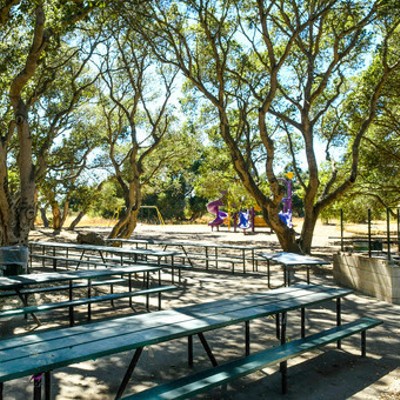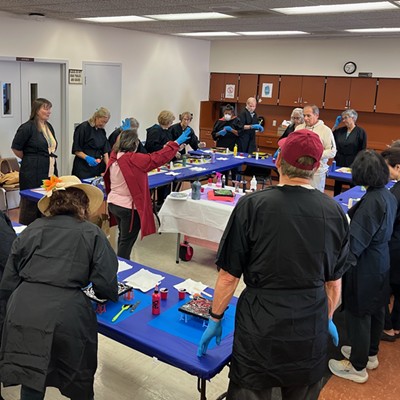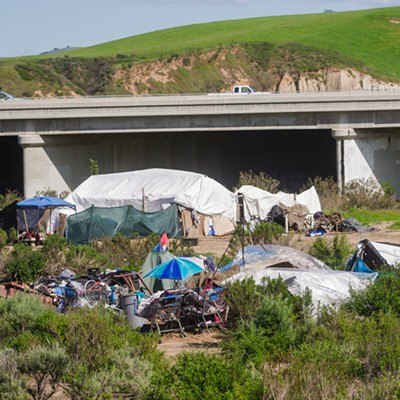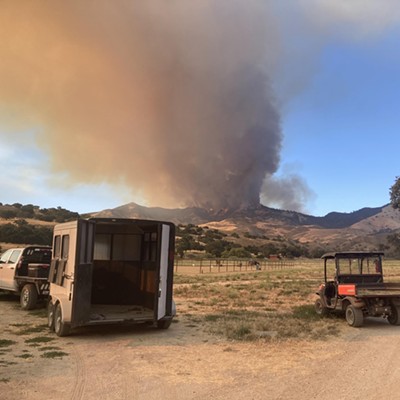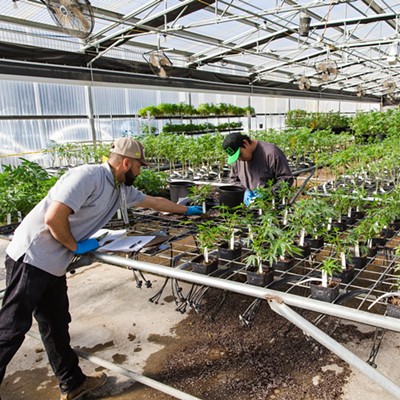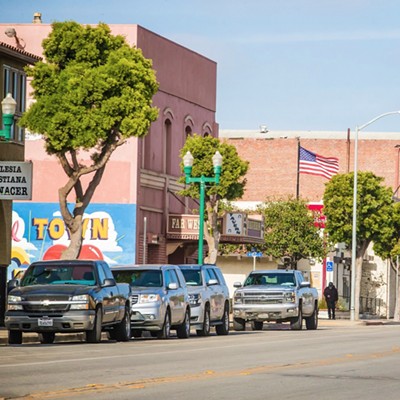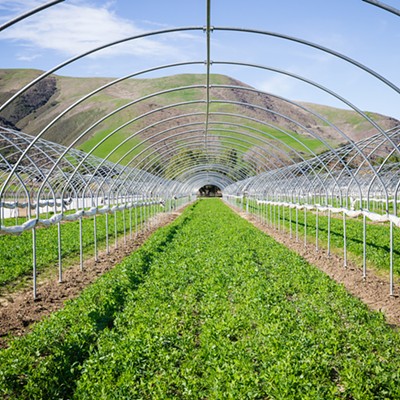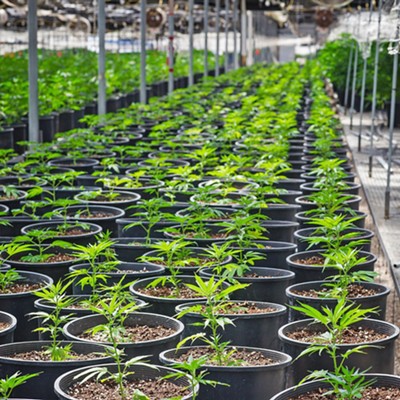When California legalized adult recreational cannabis consumption in 2016, Santa Barbara County created an ordinance to regulate the new industry and welcomed cannabis into the agricultural community. But that approach created a new set of challenges.
“What we’ve done with cannabis in Santa Barbara County is we’ve built the plane while we were in mid-flight, which is very scary. We didn’t take the wait-and-see approach like a lot of other jurisdictions did,” Santa Barbara County 4th District Supervisor Bob Nelson said. “I don’t think we fully contemplated the impacts cannabis might have on neighboring agricultural areas. I don’t think we did a good job addressing odor issues, and we should have gotten more information about what that might do to people’s health.”
Because of the learning curve they face in the ever-changing industry, Nelson said that the supervisors want to adjust the county ordinance to allow for smoother changes of ownership, to place a firm end date on license and permit applications, and to create an easier application method for processing facilities.

“Processing is where a lot of value is added to the cannabis product. … It’s easy to grow something; meanwhile if you have a processing facility you have to make sure it’s zero net energy and get a building, which is more difficult to approve. If [growers] want to get through the [application] process, they’ll want it to be just cultivation. They’d harvest and take it somewhere else,” Nelson said.
The ordinance currently has all inland—North County—cannabis cultivation and processing under an acreage cap of 1,575 acres, meaning only a certain number of acres can be used for both cultivation (growing and harvesting the plant) and processing.
During the Feb. 15 board meeting, supervisors voted 4-1 (with 3rd District Supervisor Joan Hartmann dissenting) to remove processing from that acreage cap, making it less competitive and easier to obtain land use permits and business licenses. The item returned to the Board of Supervisors on March 1, and they voted 4-1 (with Hartmann dissenting again) to adopt the resolution.
“Right now we have all this acreage of cultivation and very little processing facilities in the county. The county gets money from cultivation taxing and different areas,” Nelson explained. “The most value is in the processing, but we chased processing out of the county because of the cap. That’s what happened. We didn’t mean to do that.”
Overall, Santa Barbara County holds 30 percent of all cannabis cultivation licenses in the state of California, according to a UC Santa Barbara report. The microclimate, existing agriculture economy, and an overall welcoming sentiment encouraged the industry to flourish, the report stated.
The growth is evident with the 1,575-acre cap filled, but only 9 acres are dedicated to processing facilities, Nelson estimated. The ordinance change will hopefully encourage more operators to apply for business licenses and land use permits, and—in turn—bring more revenue into the county, Nelson said.
In the first two fiscal quarters of 2022, the county’s brought in $5.4 million in cannabis tax revenue, but that’s less than in past years, 5th District Supervisor Steve Lavagnino said. During the 2020-21 fiscal year, the county brought in $15.7 million, and in 2019-20 it received $12.2 million total.
“Revenue is falling right now, going back to 2019 numbers, and the reason for that: As this matures—with the black market issues, no retail stores, and taxes are up—we are seeing a fall,” Lavagnino said.
Santa Barbara County had a long history of black market marijuana in places like Cebada Canyon but didn’t have the revenue for enforcement until the legal market generated funding, he explained.
“We’ve gotten to the point in Santa Barbara County where we had eight enforcement actions and 3,200 plants were pulled. When we first started, it was hundreds of thousands of plants. We’re doing a good job for enforcement, and now more people are adhering to permits,” Lavagnino said.
However, the state cannabis tax increased again by another 5 percent this year (almost $161 per pound, according to CalMatters), and the high cannabis costs on legal growers can push them into the black market to earn more bang for their buck, Lavagnino explained.
By opening doors to processing facilities, the county’s trying to gain from enticing more legal applications. Right now, unprocessed marijuana is worth $200 per pound, but trimmed, dried, and packaged marijuana is worth $1,800, according to Santa Barbara Independent reporting. Supervisor Lavagnino said he hopes more revenue trickles in consistently to fund more county projects.
“This thing will find its level at some point to become a steady stream. Even though I am a big proponent of cannabis, on a budget side I tried to make it clear to not spend this on ongoing issues. Let’s spend this money on one-time funding; cannabis money fluctuates,” Lavagnino said. “[We] can’t be in a position where [we] are relying on it but don’t know what’s going to happen to the industry.”
Although the county could potentially receive more funding from an increase in cannabis processing projects, some residents—including Susan Ashbrook—remain concerned about the impact the industry has on their lives and neighborhoods.
Ashbrook is a Cebada Canyon resident. She said she joined the Santa Barbara County Coalition for Responsible Cannabis because she’s felt the industry’s negative impacts and wants to see change. Although no one can develop cannabis projects in Cebada Canyon due planning code regulations, she remains concerned for her neighbors in other impacted communities.
“I joined the coalition like so many of my neighbors because I felt like it was important to be heard, that the supervisors knew there were people that wanted them to slow down,” Ashbrook said.
The issue is not that cannabis became legal in 2016, she said, but rather it’s ongoing processing problems like odor—which disrupted the quality of life in her neighborhood from projects prior to the county’s Cebada Canyon regulations, and now is affecting other communities. Odor control has been inadequate, Ashbrook said, and she fears it will only get worse if more processing facilities make their way to the county.
“I don’t see [odor control] coming from regulation. … I know when I complained about odor, I never had anyone follow up, and it was on me to prove it,” Ashbrook said. “I do see responsible cannabis growers say they are going to improve odor control, and I see there are responsible growers wanting to do the right thing, and I applaud them.”
In terms of processing facilities, she recalled one of the Board of Supervisors’ discussions where they said they felt “terrible” for cannabis growers who had to travel many miles to get their product processed.
“While I can appreciate that in this economy, I understand there’s 20 processing centers in Carpinteria and 29 active applications in the permitting process. It seems to me there’s adequate processing without expanding more,” Ashbrook said.
She said she wants to see the county take its time with decisions like this to weigh all possible outcomes and listen to community needs.
“I think there’s certain areas where people’s lives and investments are impacted. … It affects many layers of people’s lives and the generations to come,” she said.
Reach Staff Writer Taylor O’Connor at [email protected].


